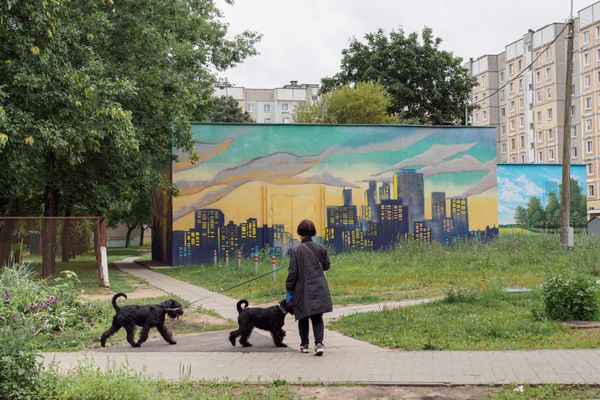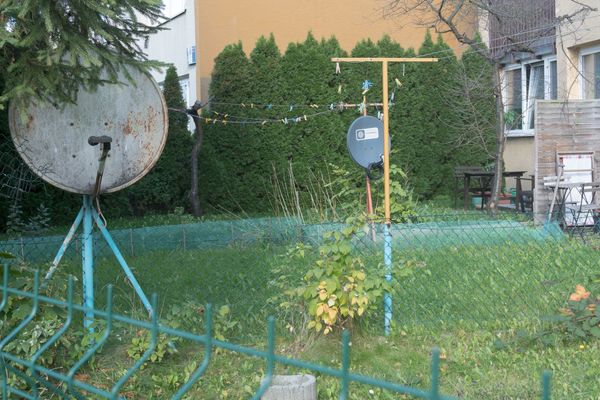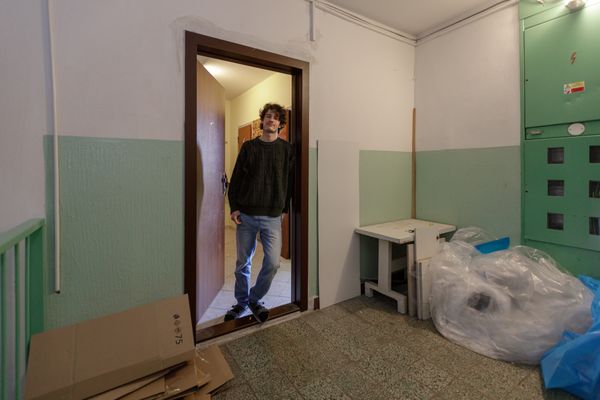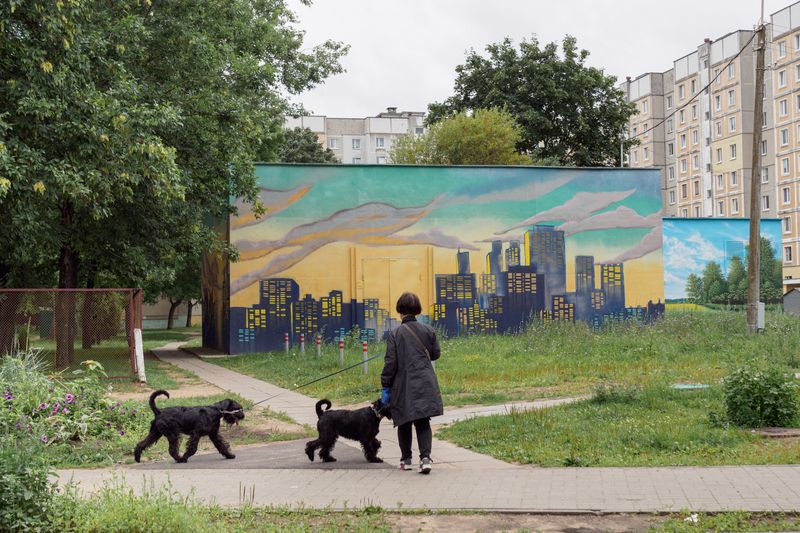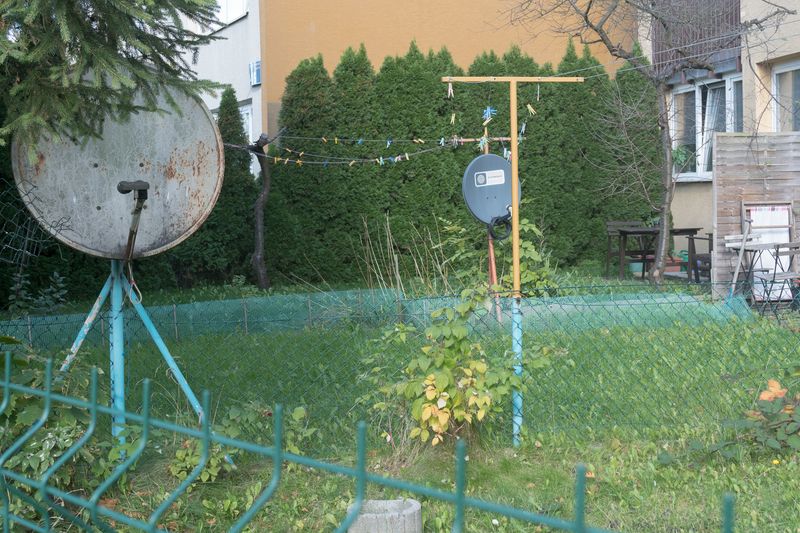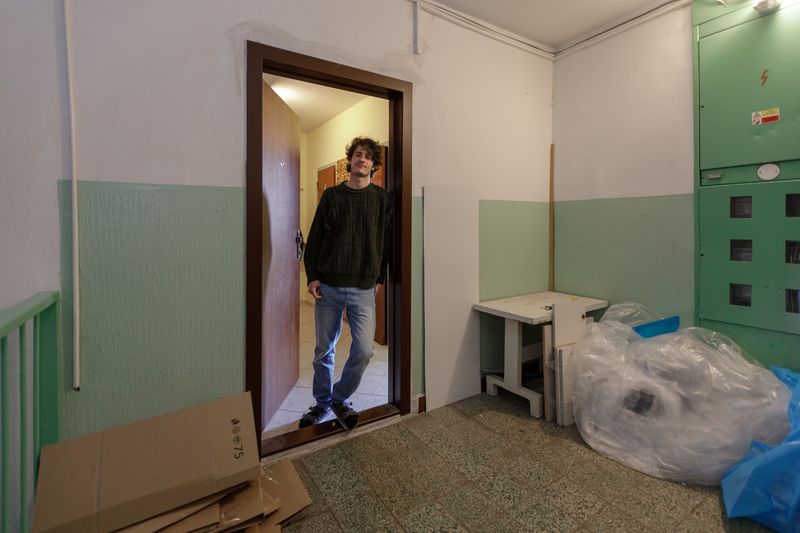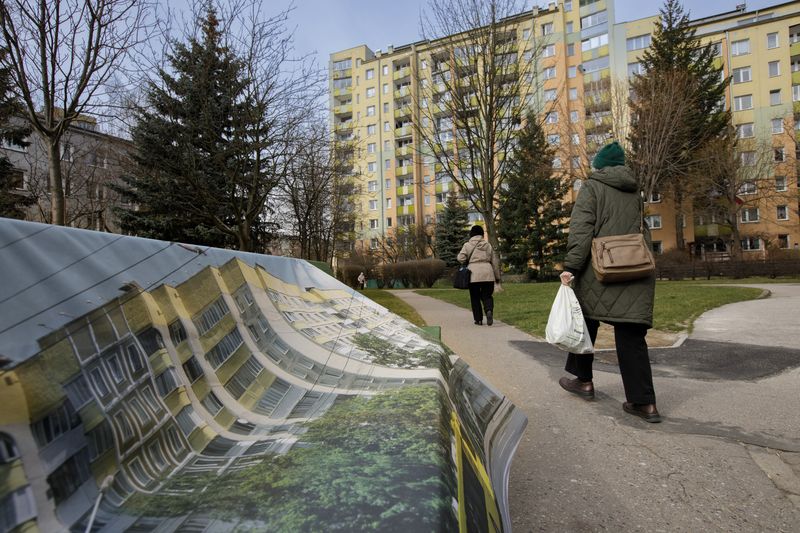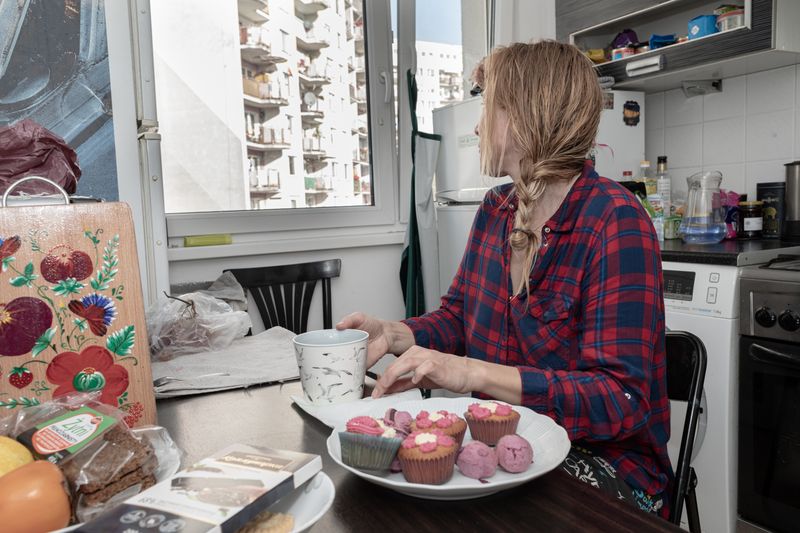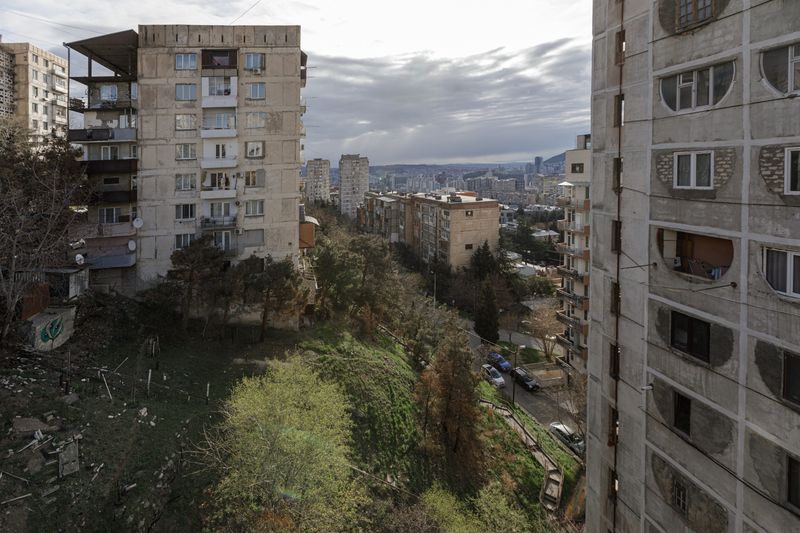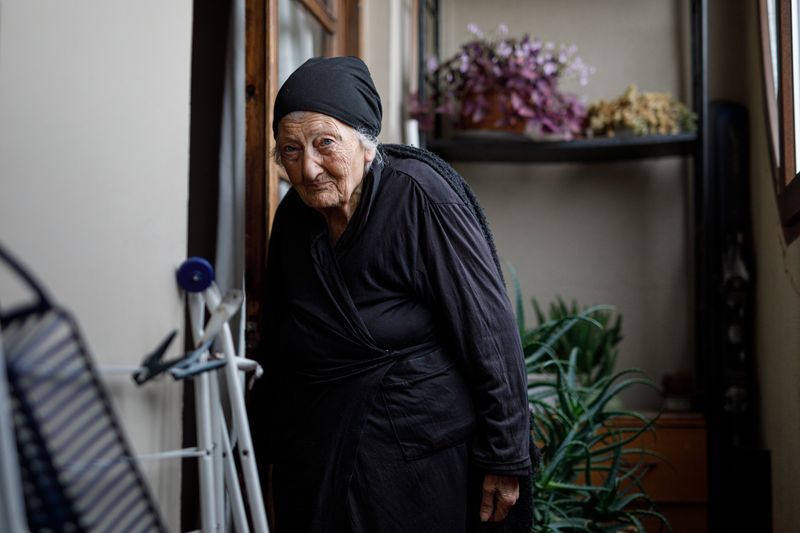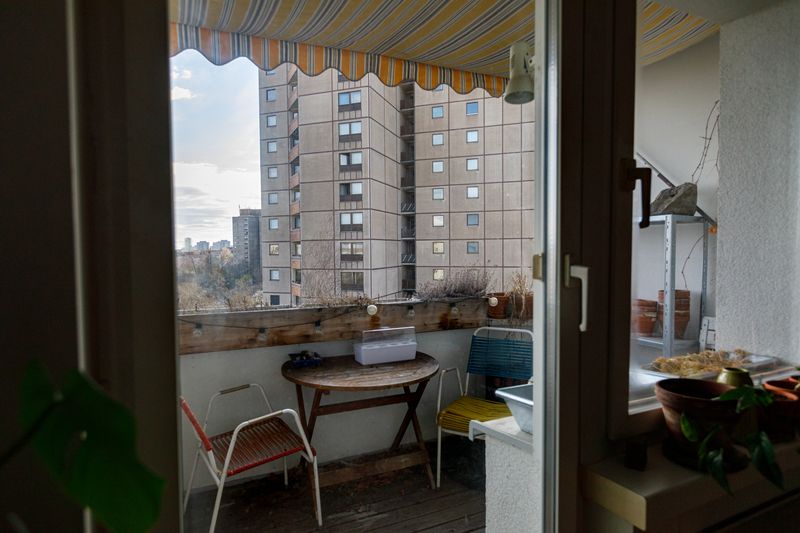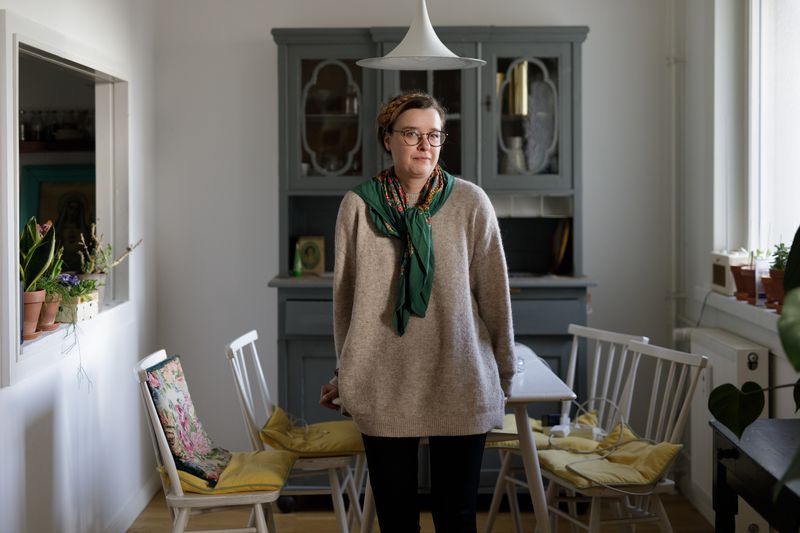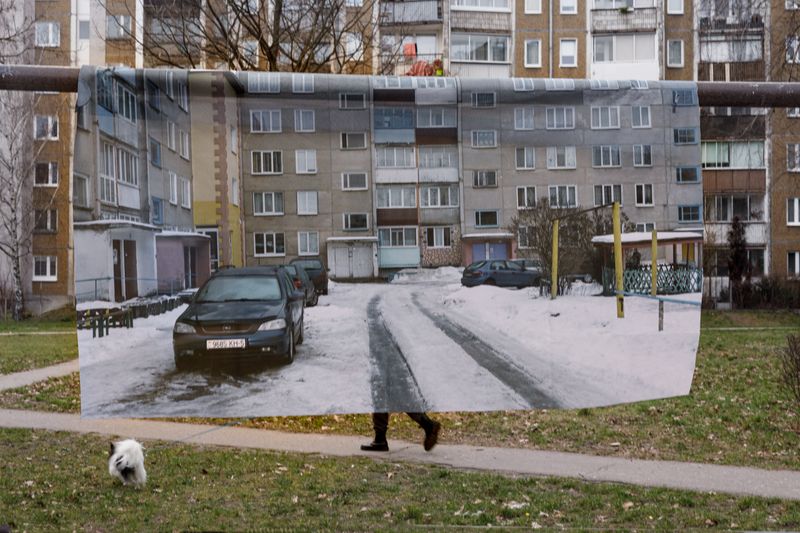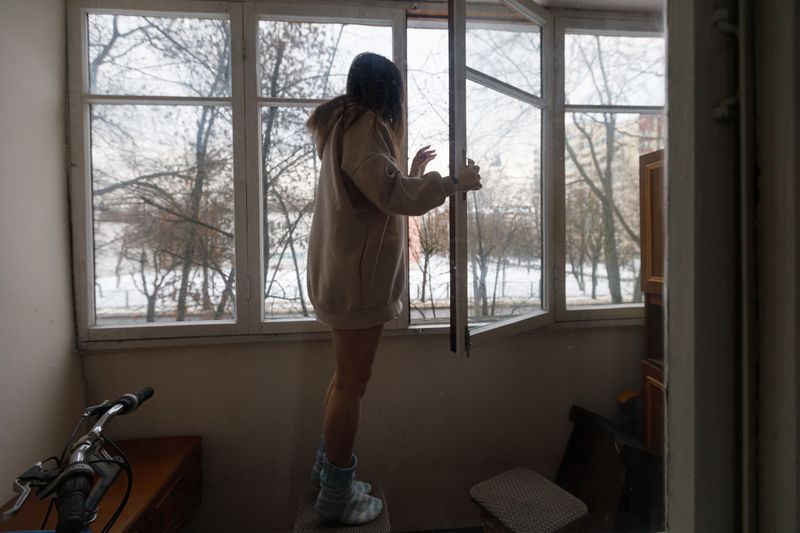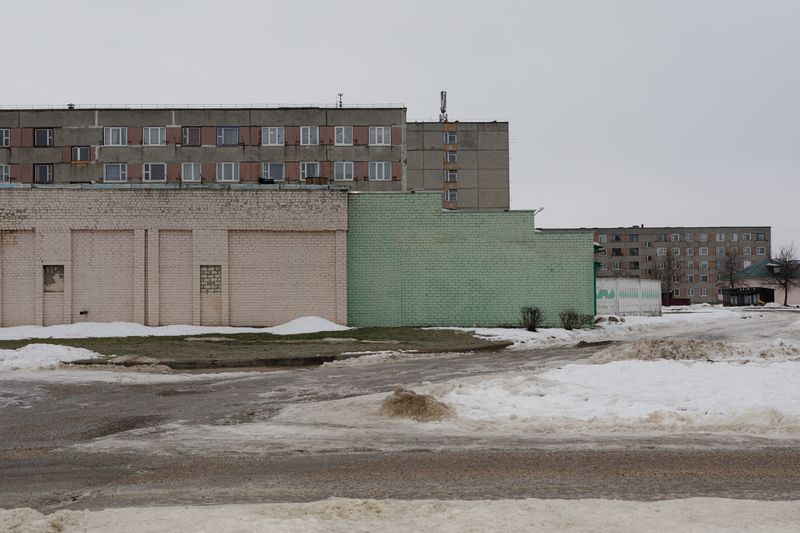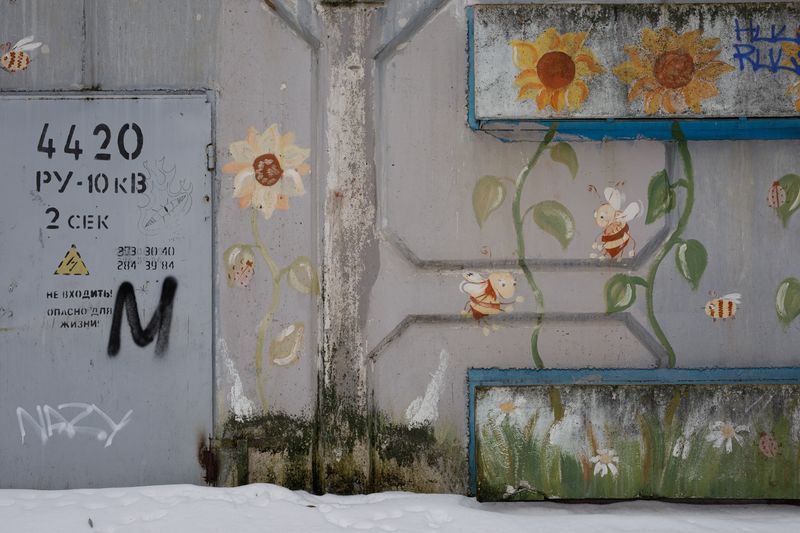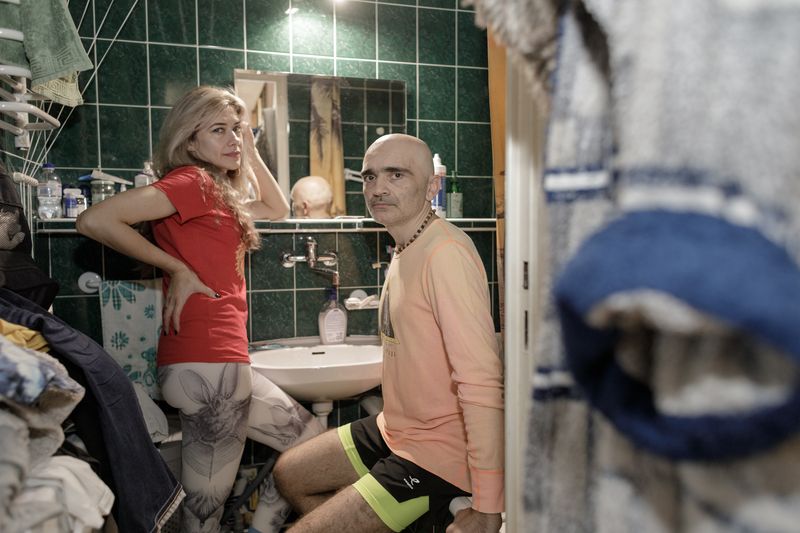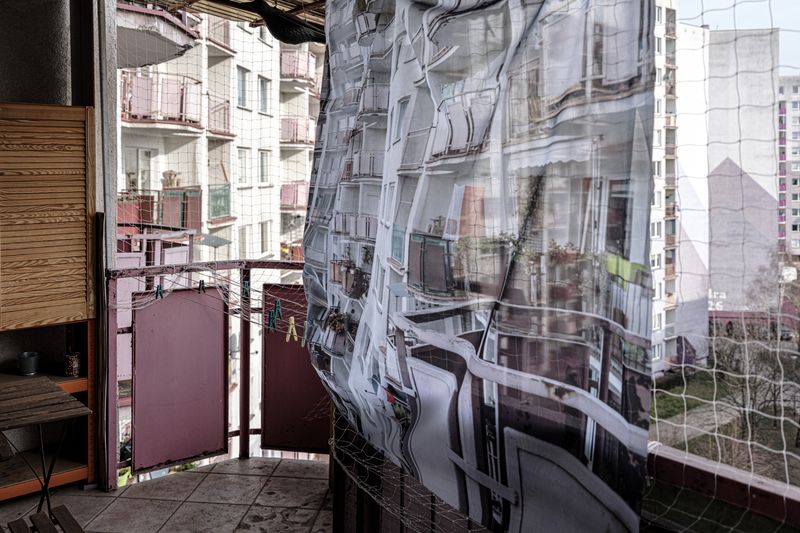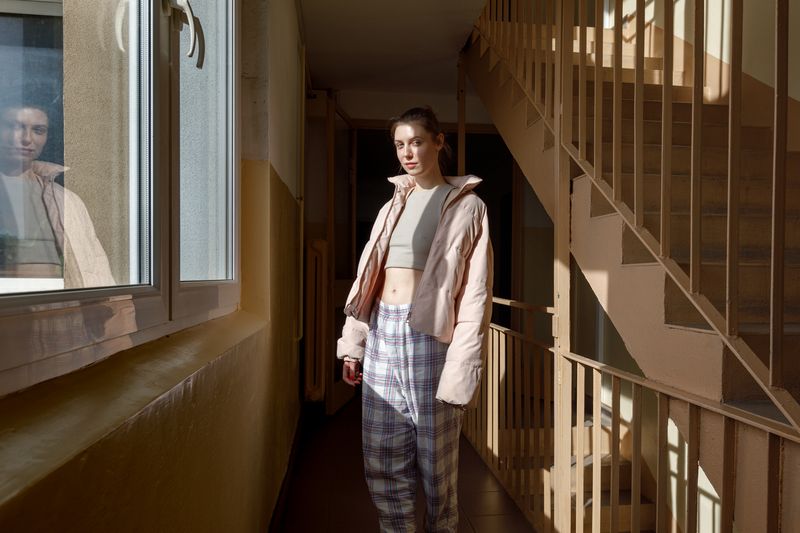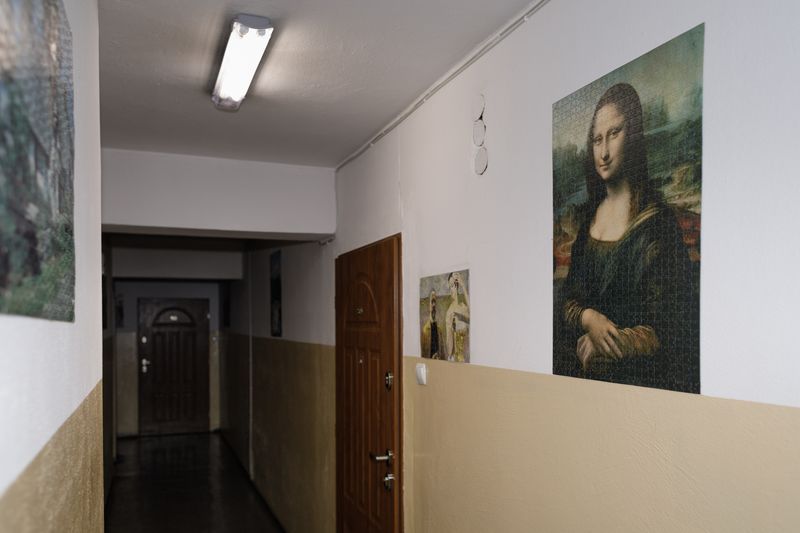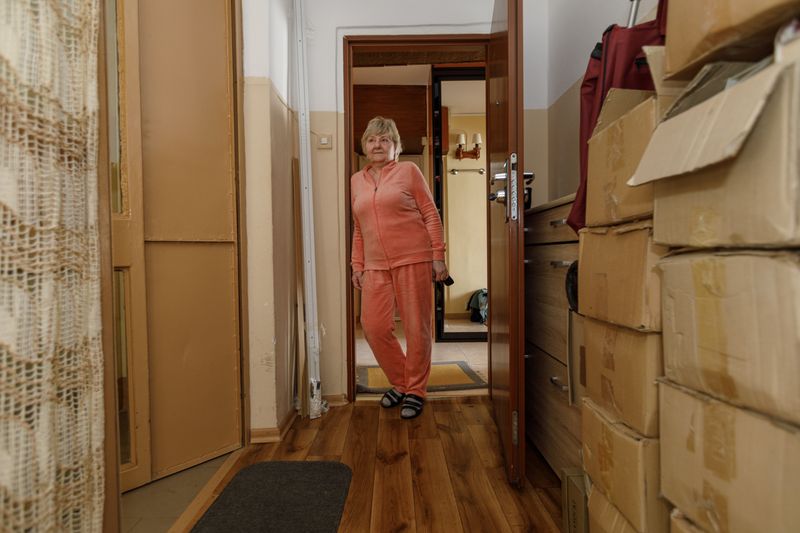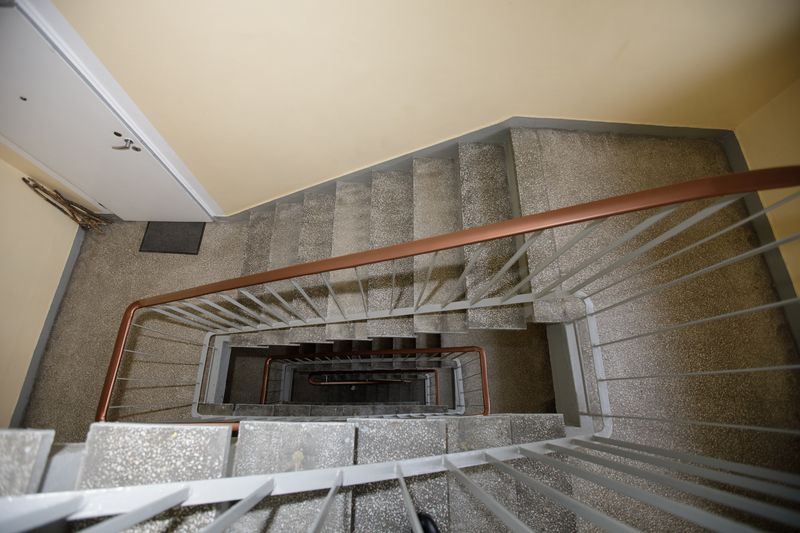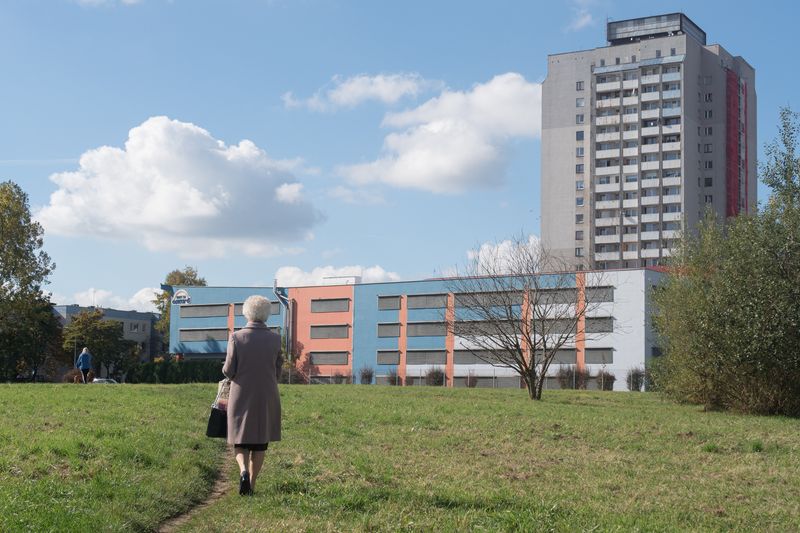Betonia
-
Dates2022 - Ongoing
-
Author
- Locations Germany, Poland, Georgia, Slovakia, Belarus
BETONIA is a project, which explores contemporary identity in Eastern Europe and former Soviet Block countries in relation to the architectural heritage - residential blocks from panels.
People live in houses created during the Soviet period, but their worldview and ideological component are already developing in a different environment from the socialist one. In this situation, they form new urban rituals, practices and meanings.
The project involves travelling along some countries (incl. Poland, Slovakia, Germany, Georgia, Belarus, Lithuania, Estonia, Slovenia) of the Iron Curtain, which is understood as the former political barrier erected from 1946 which divided the Soviet Union from the West during the Cold War. By juxtaposing residents’ social rituals from different countries and integrating printed on curtains block house buildings from one country in another, I am looking for a comprehensive understanding of how the identity has been shaped. What are the differences in each of the country and yet what forms a unique mutual, distinct from its “Western” counterparts, identity.
